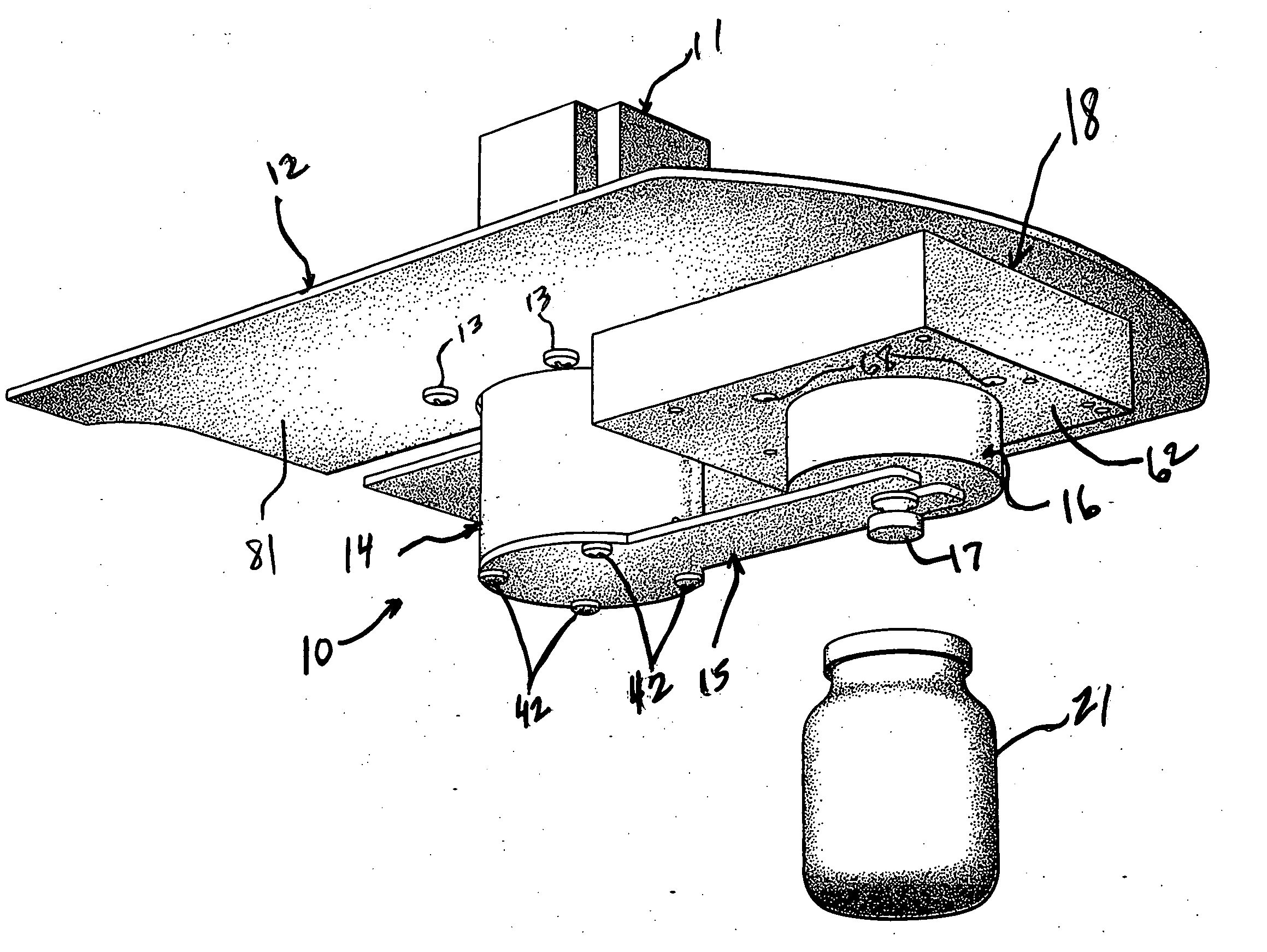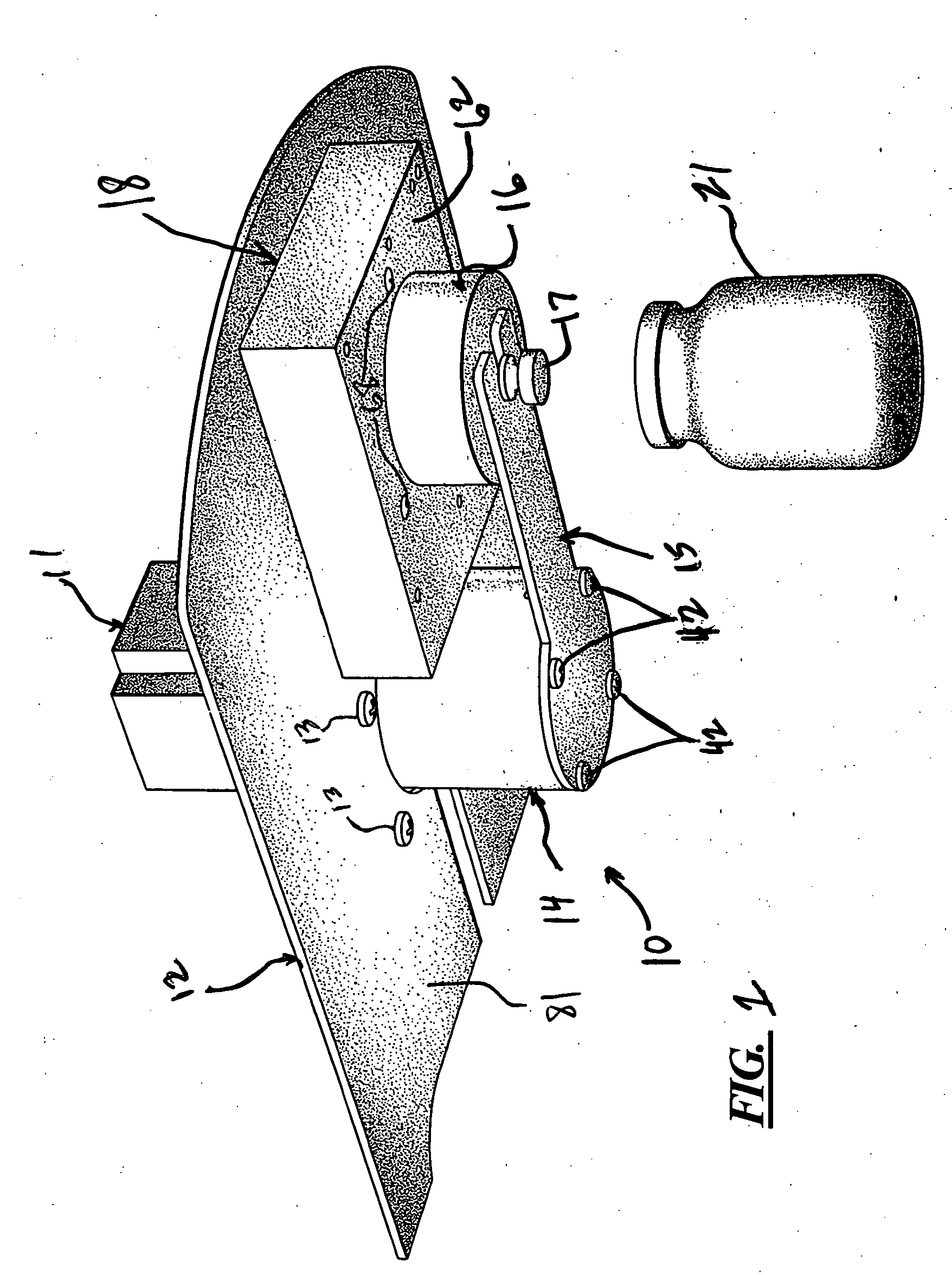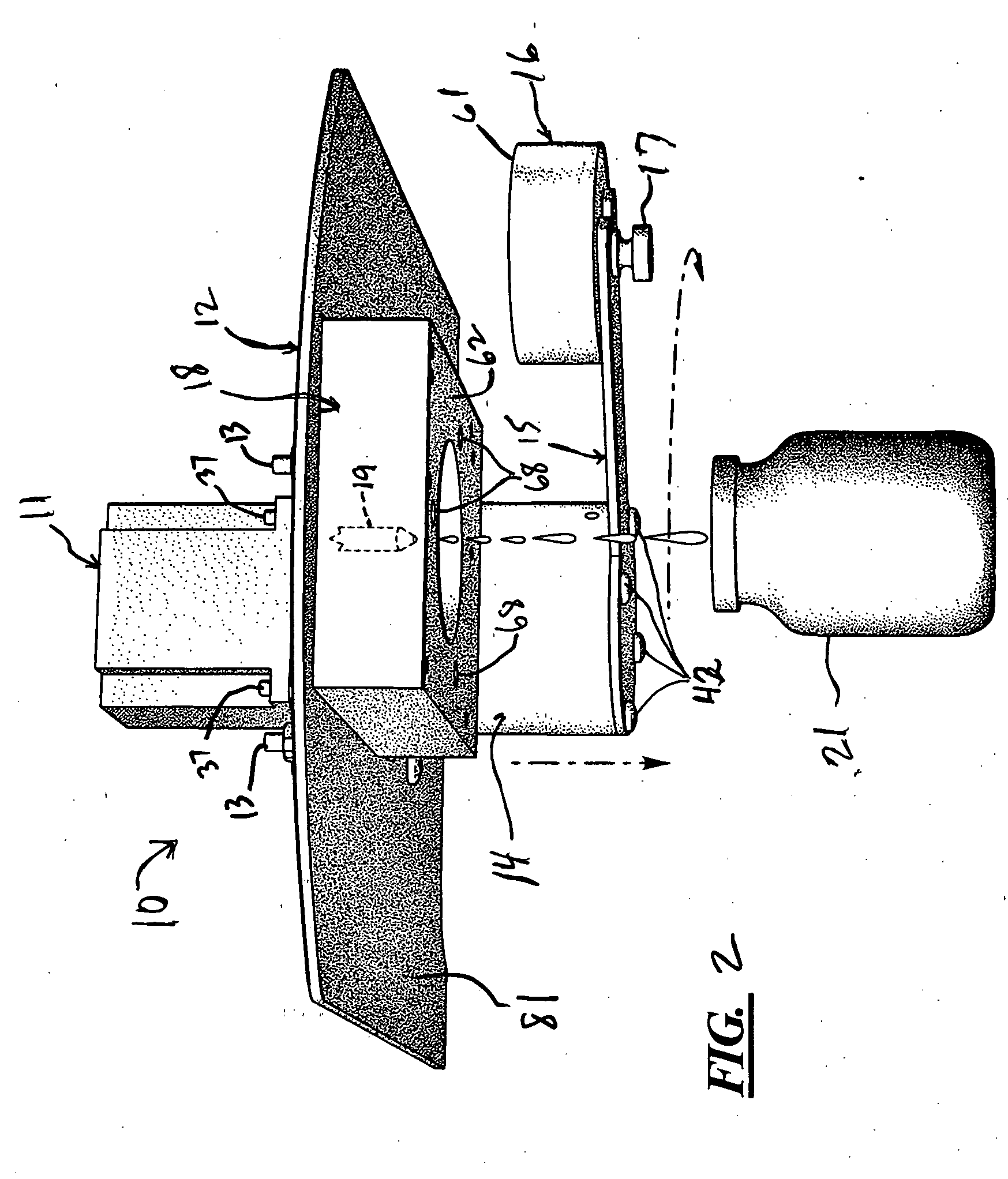Articulated nozzle closure for fluid dispensers
- Summary
- Abstract
- Description
- Claims
- Application Information
AI Technical Summary
Benefits of technology
Problems solved by technology
Method used
Image
Examples
Embodiment Construction
[0034] Turning to FIG. 1, a closure system 10 is disclosed which includes a motor 11 supported by a mounting plate 12. The motor 11 is connected to the mounting plate by a plurality of fasteners shown at 13. The motor 11 is coupled to a hub 14 which, in turn, is connected to an arm 15 which connects the hub 14 to a closure element 16 which, in the embodiment shown, is a cup-shaped structure. A fastener 17 is used to connect the arm 15 to the closure element 16. It would be noted that the hub structure 14 could be altered so that it is connected directly to the closure element 16. As shown in the position of FIG. 1, the closure element 16 engages the underside of a block 18 which surrounds one or more nozzles 19 (see FIG. 2). A container 21 is disposed below and in general alignment with the nozzle 19 and block 18.
[0035] In the position shown in FIG. 1, the closure system 10 is in a closed or sealed position with the closure element 16 engaging the block 18. Turning to FIG. 2, the s...
PUM
| Property | Measurement | Unit |
|---|---|---|
| Area | aaaaa | aaaaa |
Abstract
Description
Claims
Application Information
 Login to View More
Login to View More - R&D
- Intellectual Property
- Life Sciences
- Materials
- Tech Scout
- Unparalleled Data Quality
- Higher Quality Content
- 60% Fewer Hallucinations
Browse by: Latest US Patents, China's latest patents, Technical Efficacy Thesaurus, Application Domain, Technology Topic, Popular Technical Reports.
© 2025 PatSnap. All rights reserved.Legal|Privacy policy|Modern Slavery Act Transparency Statement|Sitemap|About US| Contact US: help@patsnap.com



